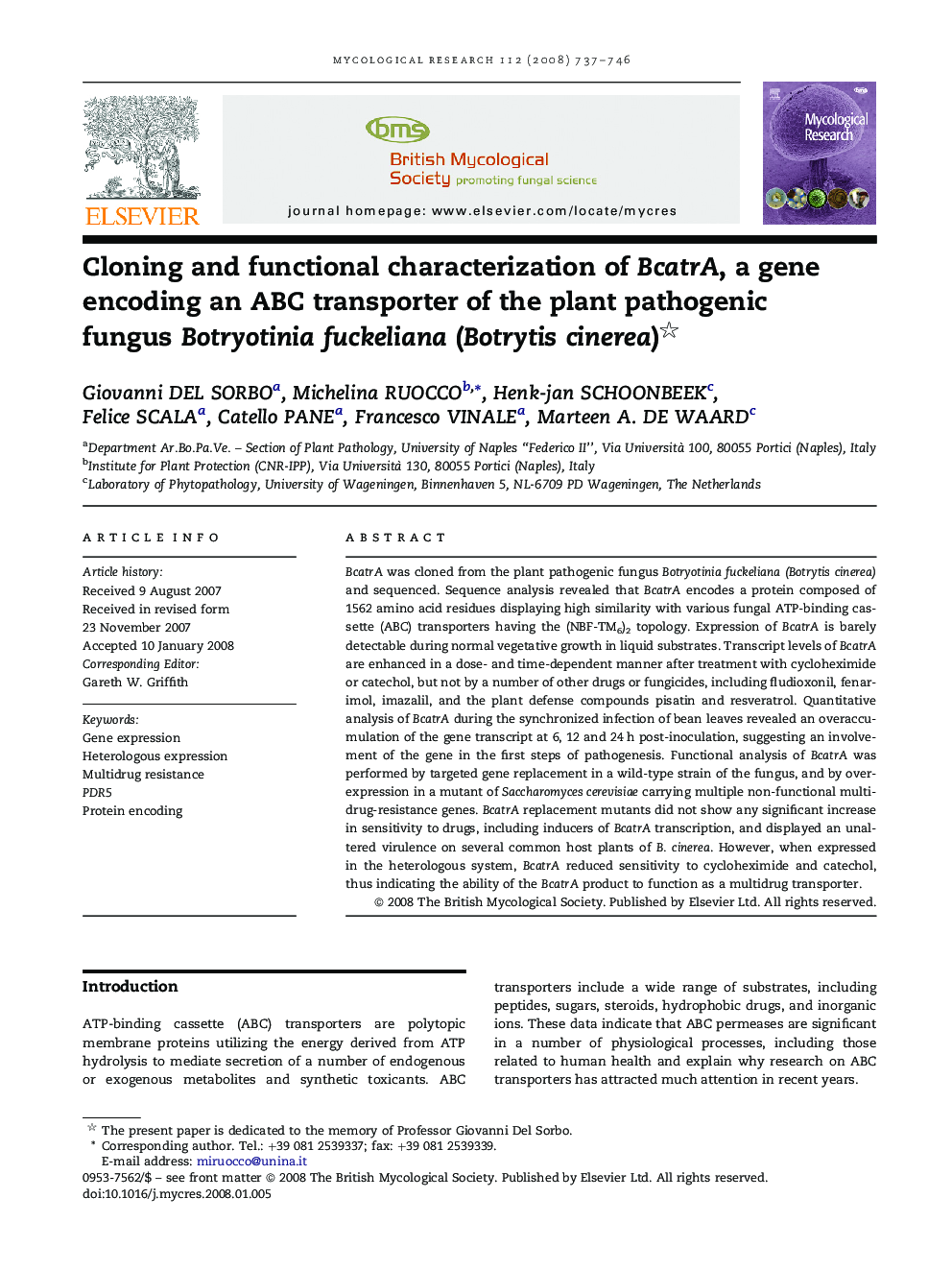| Article ID | Journal | Published Year | Pages | File Type |
|---|---|---|---|---|
| 4357785 | Mycological Research | 2008 | 10 Pages |
Abstract
BcatrA was cloned from the plant pathogenic fungus Botryotinia fuckeliana (Botrytis cinerea) and sequenced. Sequence analysis revealed that BcatrA encodes a protein composed of 1562 amino acid residues displaying high similarity with various fungal ATP-binding cassette (ABC) transporters having the (NBF-TM6)2 topology. Expression of BcatrA is barely detectable during normal vegetative growth in liquid substrates. Transcript levels of BcatrA are enhanced in a dose- and time-dependent manner after treatment with cycloheximide or catechol, but not by a number of other drugs or fungicides, including fludioxonil, fenarimol, imazalil, and the plant defense compounds pisatin and resveratrol. Quantitative analysis of BcatrA during the synchronized infection of bean leaves revealed an overaccumulation of the gene transcript at 6, 12 and 24Â h post-inoculation, suggesting an involvement of the gene in the first steps of pathogenesis. Functional analysis of BcatrA was performed by targeted gene replacement in a wild-type strain of the fungus, and by overexpression in a mutant of Saccharomyces cerevisiae carrying multiple non-functional multidrug-resistance genes. BcatrA replacement mutants did not show any significant increase in sensitivity to drugs, including inducers of BcatrA transcription, and displayed an unaltered virulence on several common host plants of B. cinerea. However, when expressed in the heterologous system, BcatrA reduced sensitivity to cycloheximide and catechol, thus indicating the ability of the BcatrA product to function as a multidrug transporter.
Related Topics
Life Sciences
Agricultural and Biological Sciences
Agricultural and Biological Sciences (General)
Authors
Giovanni Del Sorbo, Michelina Ruocco, Henk-jan Schoonbeek, Felice Scala, Catello Pane, Francesco Vinale, Marteen A. De Waard,
